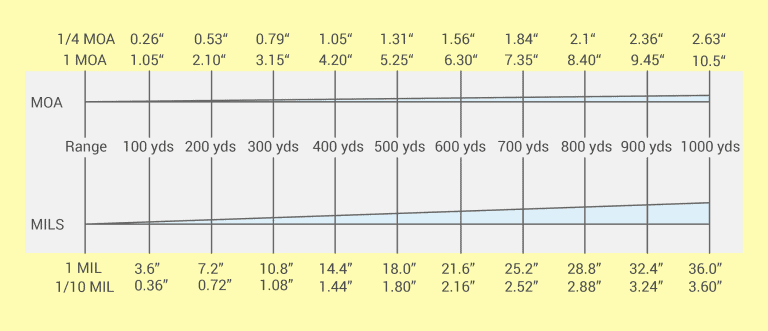In the gun world, there are lots of debates to be had.
You can try your best to stay out of them, but when selecting a rifle scope, there’s one debate you have to pick a side on. That’s MOA vs MRAD.
So what are these things and which is better?
Well, MOA stands for minutes of angle, while MRAD is short for milliradians. Both are units of measure for angular measurement.
These are the units used for things like scope reticle subtensions, rangefinders, and adjustment turrets. In short, they’re the units used for making scope adjustments.
As for which is better, ultimately, it just comes down to personal preference. So to help you figure out which one you prefer, we’re going to talk about each one individually and its particular advantages. Then we’ll do a bit of one on one comparison to help you make the right decision for you.
Table Of Contents
What Is Minute of Angle (MOA)?

As we’ve already said, the minute of angle (MOA) is a unit of measure for angular measurement, similar to degrees.
In fact, degrees break down into MOA. There are 60 minutes per degree. Since there are 360 degrees in a circle, there are 21,600 minutes (360×60) in a circle.
But what does that mean for shooting? Well, 1 MOA equals 1.047 inches at 100 yards. In other words, a 1 MOA adjustment represents a change of 1.047 inches at 100 yards.
While not technically part of the imperial system, that coincidental closeness to 1 inch at 100 yards makes the MOA system very popular with users of the imperial system.
It makes it easy to scale up adjustments as you move up distances. Simply round down to 1 inch and add an additional inch with each additional hundred yards. This is called “shooter’s MOA.”
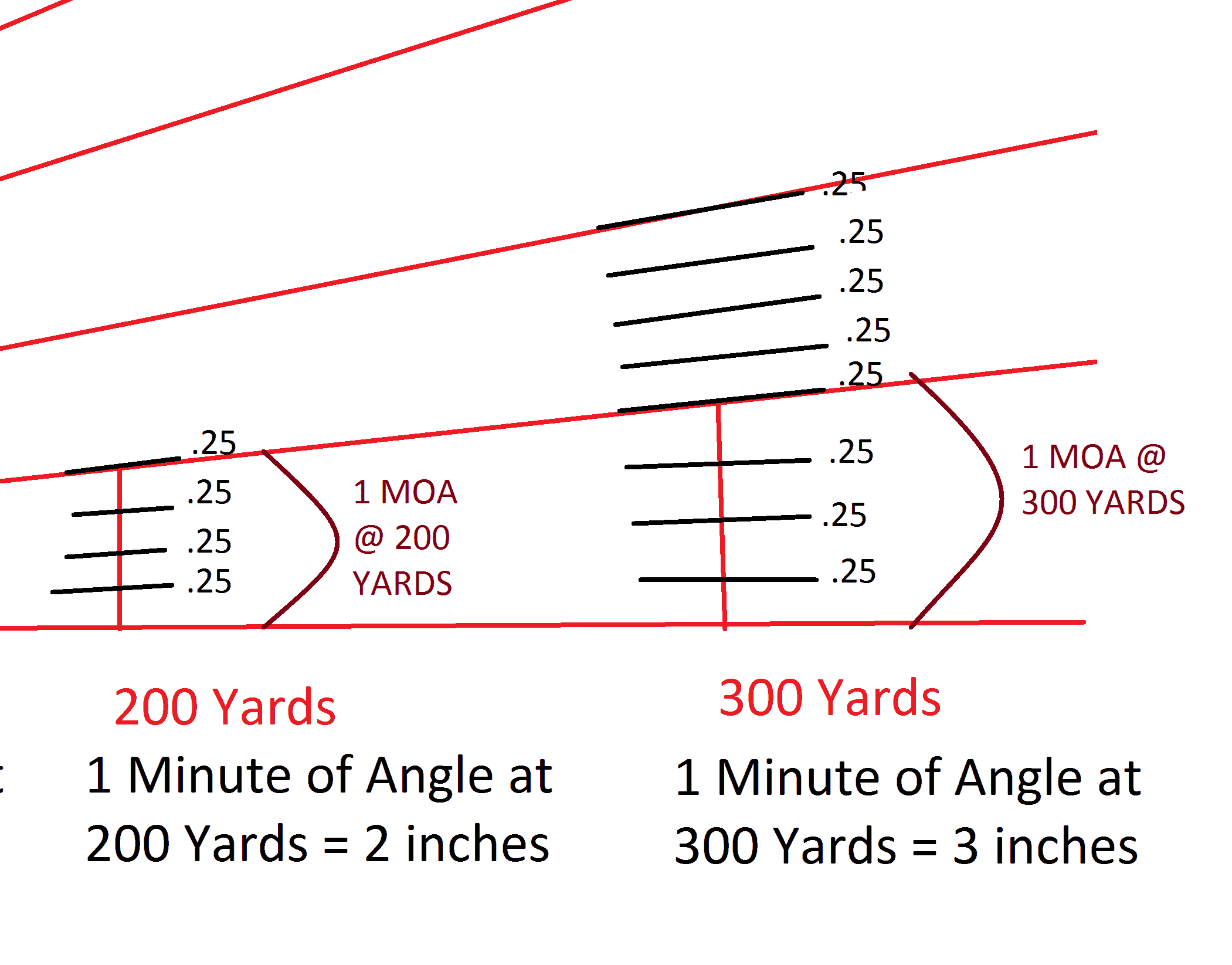
However, at longer distances the slight difference compounds and isn’t as accurate. For example, at 1,000 yards, 1 MOA equals 10.47 inches, an almost half inch difference from just using the rough 1 MOA equals 1 inch per 100 yards.
Of course, you can still multiply the 1.047 inches that an MOA truly represents at 100 yards for an accurate number. It’s just not quite as convenient. The lesser accuracy of shooter’s MOA is still plenty sufficient for most circumstances.
You don’t have to know the distance of your target for MOA to be useful, though. When you’re not sure about the distance, you can use an MOA equation to estimate it.
Simply estimate the size of your target in inches and multiply it by 100. Then divide your answer by the target size in MOA. That gives you the distance of your target in yards.
MOA turrets generally have ¼ MOA click intervals. That means that each click adjusts the MOA reticle by ¼ MOA, or roughly ¼ inch.
Some MOA turrets adjust as little as ⅛ MOA. However, many shooters find that increment to be overly precise. It may just not be useful, but it can also make dialing take too long as you try to make the necessary adjustments.
MOA scopes are also widely used in certain types of competition shooting, such as F Class.
What Is Milliradian (MRAD)?
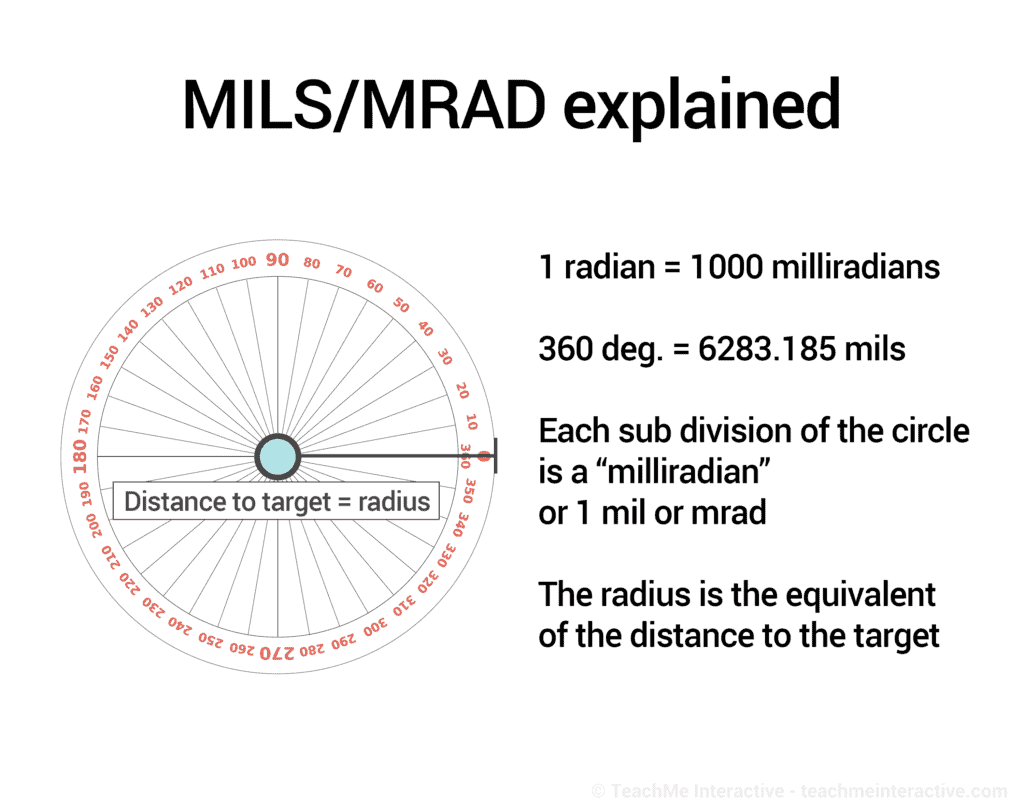
Milliradians are another unit of angular measure, but they’re part of the metric system. MRADs are also often abbreviated to mils.
Just like degrees break down into minutes, radians break down into milliradians. A radian is equal to a little less than 57.3 degrees.
There are 1,000 milliradians per radian. There are 6.2832 radians in a circle, so there are 6,238.2 milliradians in a circle.
A mil equals 3.6 inches at 100 yards. To calculate the mil for a particular distance in yards, multiply it by 3.6, then divide by 100. That’s not quite as easy as calculating shooter’s MOA, but still pretty straightforward.
And if you’re already comfortable with the metric system, it’s even easier. 1/10 mils equals 1 cm at 100 meters. All those 1s make calculations a breeze. That is, after all, why people use the metric system.

To make it even easier, turrets on mil scopes tend to have 1/10 mil click intervals. Furthermore, MRAD reticles, such as the mil-dot reticle, tend to mark every 1 milliradian.
The adjustment made by 10 clicks is equal to the space between two marks on the reticle.
Like with MOA, you don’t have to know the distance to your target for the mil system to be useful. To determine the distance to your target, estimate the size of the target and multiply it by 1000.
Then divide that number by the target size in MILs.
Whatever unit you use for your target size estimation will be the same unit that the distance to the target is reflected in. If you want the distance in a different unit, you’re best off converting it after you’ve used the above formula.
There are equations that use different numbers to build the conversion in, but it’s more straightforward to just do it afterwards.
What Are The Pros of MOA?
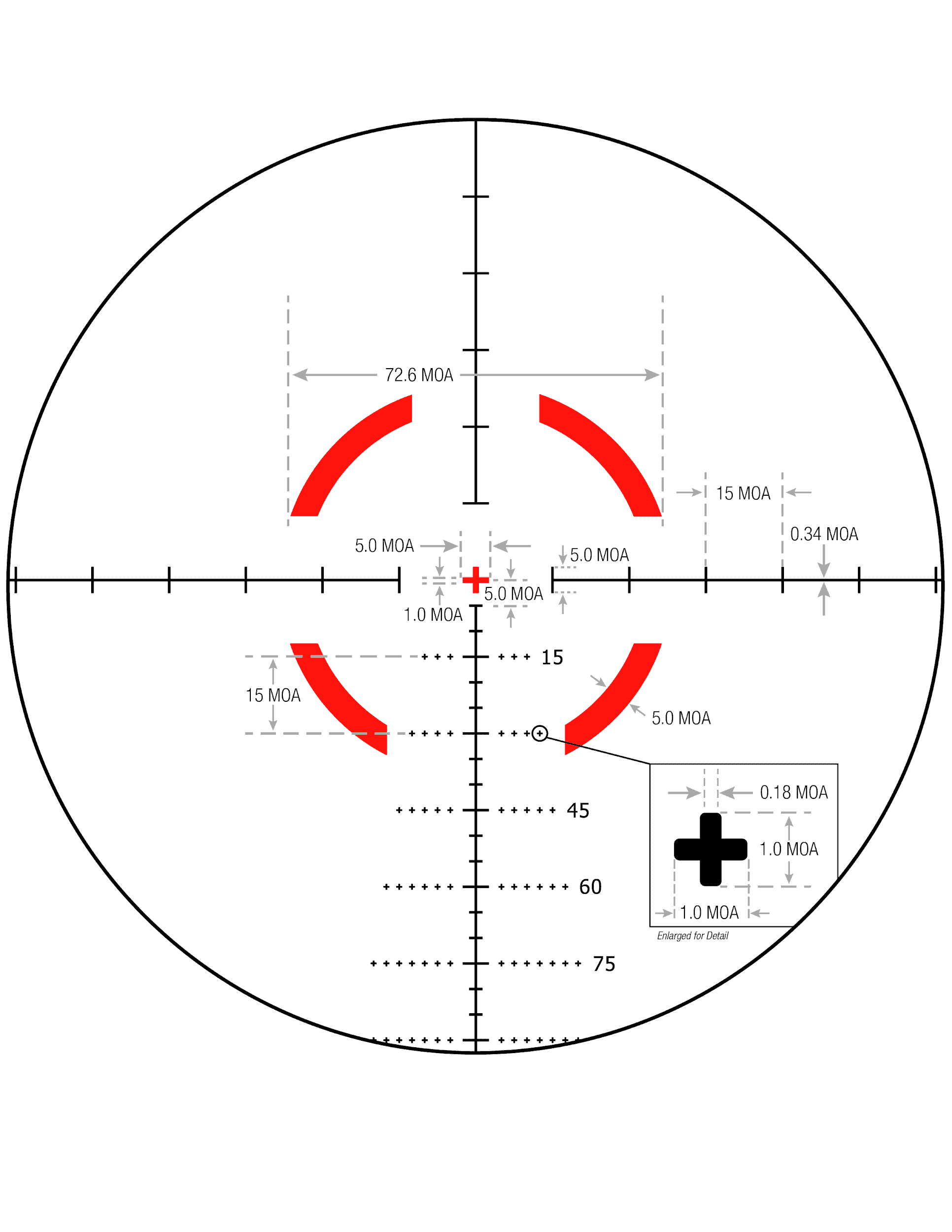
Ultimately, there’s little practical difference between the MOA system and the mil system. Still, the differences that do exist do mean there are slight perks to choosing one over the other.
For example, ¼ MOA adjustments equate to about half of 1/10 mil adjustments. ¼ MOA equals 2.1675 inches at 1,000 yards. 1/10 mil equals 3.93701 inches at the same range.
In addition, MOA is pretty familiar and easy to use for those used to imperial measurements. This is especially the case for shooter’s MOA.
Similarly, ballistic tables tend to use imperial measures of distance, feet and yards. This makes it easier to calculate using MOA since there’s no need for conversion. However, there are tables that have just mil data or both MOA and mil data.
What Are The Pros of MRAD?
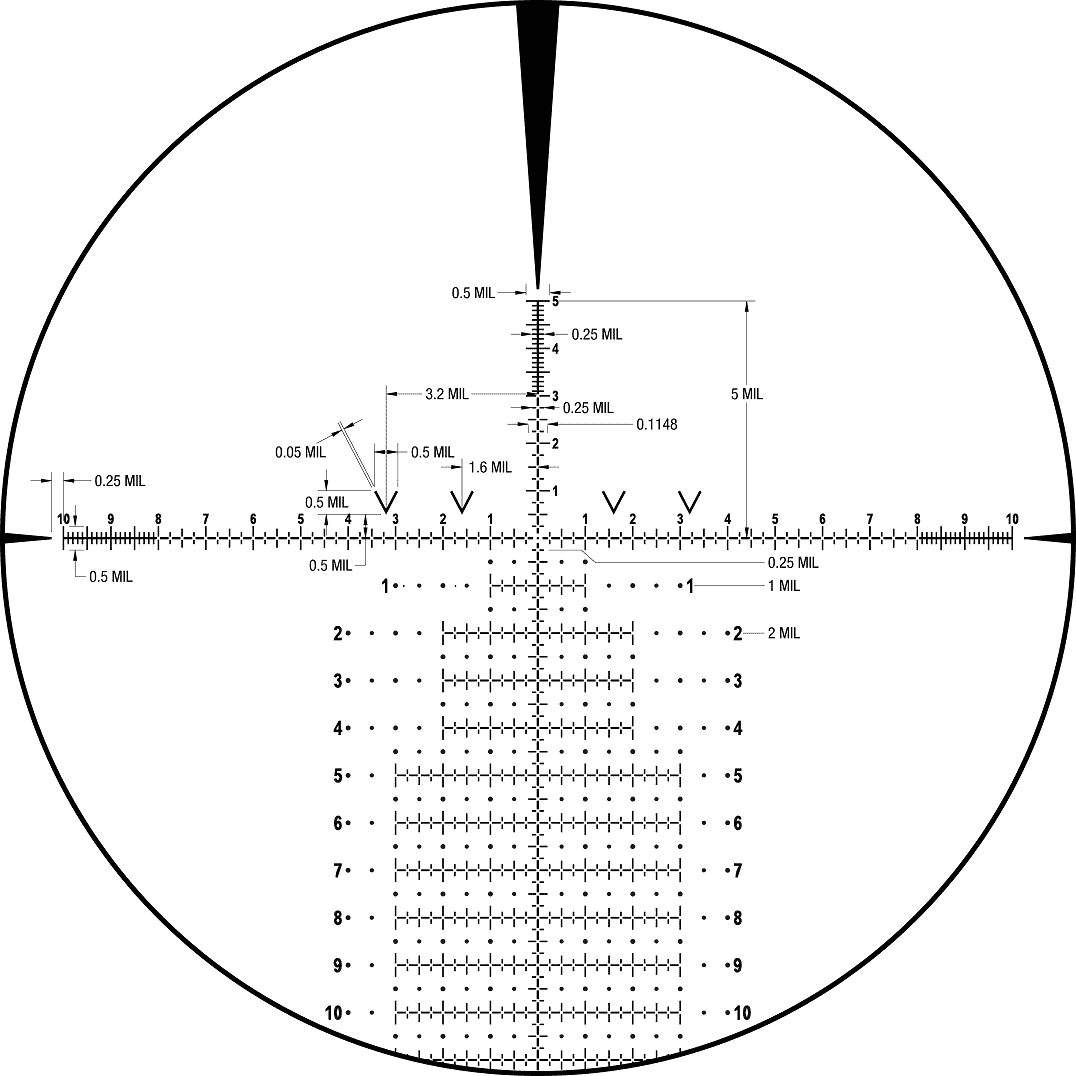
On the other hand, the fact that the mil system uses base 10 makes calculations very straightforward, even if you aren’t particularly well versed in the metric system.
In addition, MRAD scopes are the standard for military use in the vast majority of armed forces around the world. That’s including both the US Military and NATO forces.
This widespread military use has led to the mil system being more widely adopted in high-end optics and by shooting professionals.
